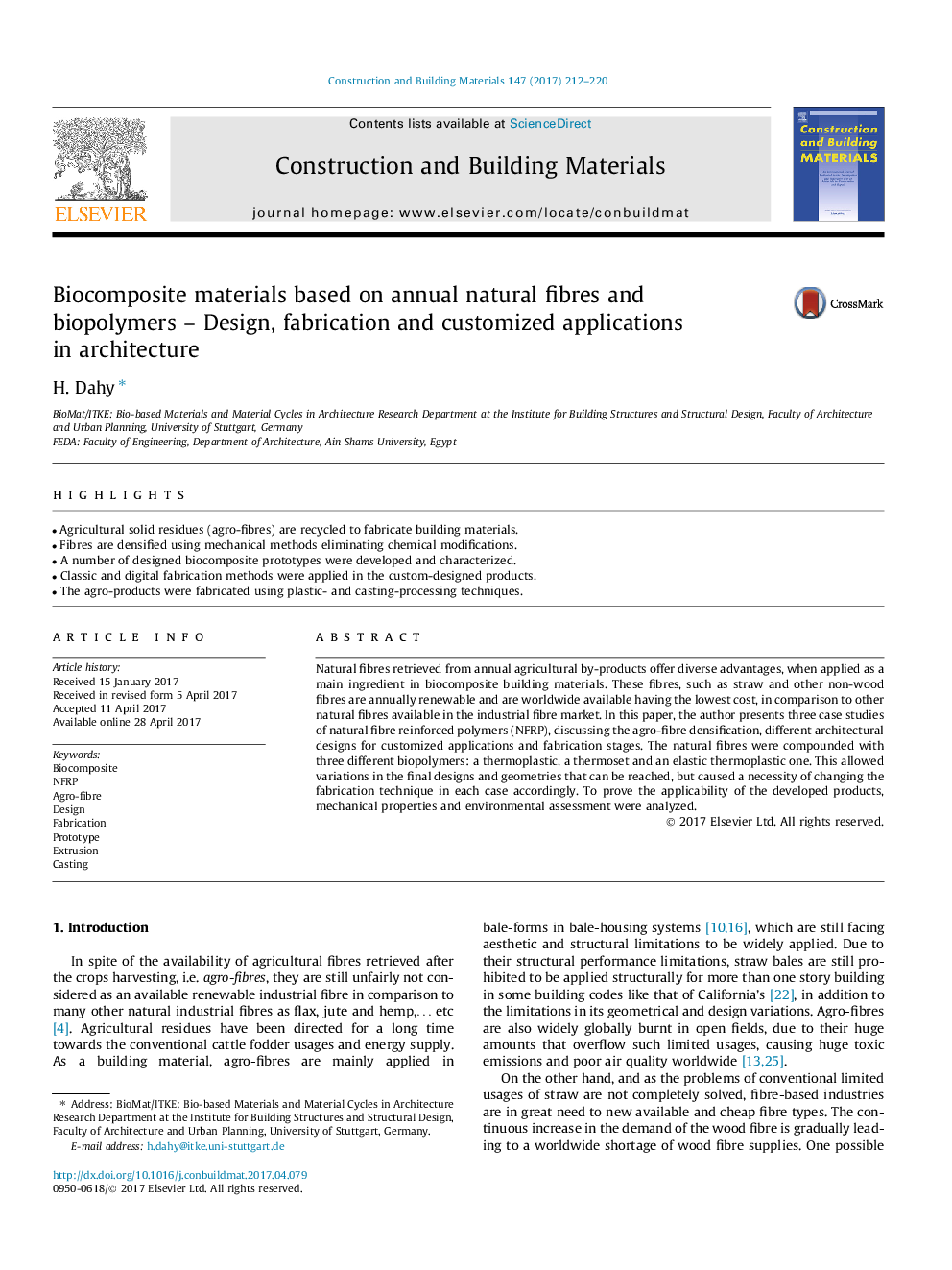| Article ID | Journal | Published Year | Pages | File Type |
|---|---|---|---|---|
| 6480496 | Construction and Building Materials | 2017 | 9 Pages |
â¢Agricultural solid residues (agro-fibres) are recycled to fabricate building materials.â¢Fibres are densified using mechanical methods eliminating chemical modifications.â¢A number of designed biocomposite prototypes were developed and characterized.â¢Classic and digital fabrication methods were applied in the custom-designed products.â¢The agro-products were fabricated using plastic- and casting-processing techniques.
Natural fibres retrieved from annual agricultural by-products offer diverse advantages, when applied as a main ingredient in biocomposite building materials. These fibres, such as straw and other non-wood fibres are annually renewable and are worldwide available having the lowest cost, in comparison to other natural fibres available in the industrial fibre market. In this paper, the author presents three case studies of natural fibre reinforced polymers (NFRP), discussing the agro-fibre densification, different architectural designs for customized applications and fabrication stages. The natural fibres were compounded with three different biopolymers: a thermoplastic, a thermoset and an elastic thermoplastic one. This allowed variations in the final designs and geometries that can be reached, but caused a necessity of changing the fabrication technique in each case accordingly. To prove the applicability of the developed products, mechanical properties and environmental assessment were analyzed.
